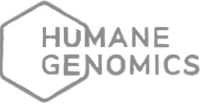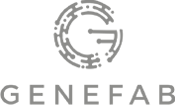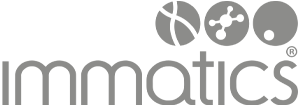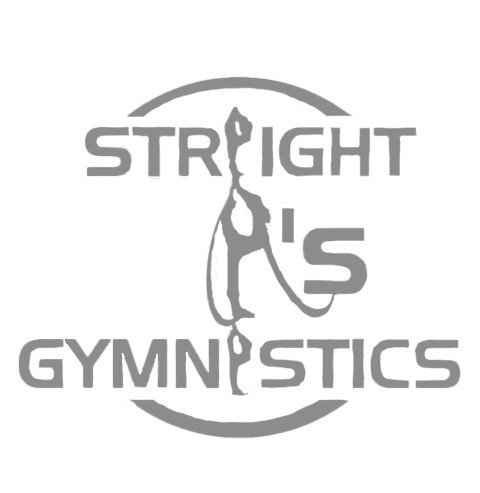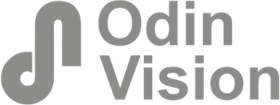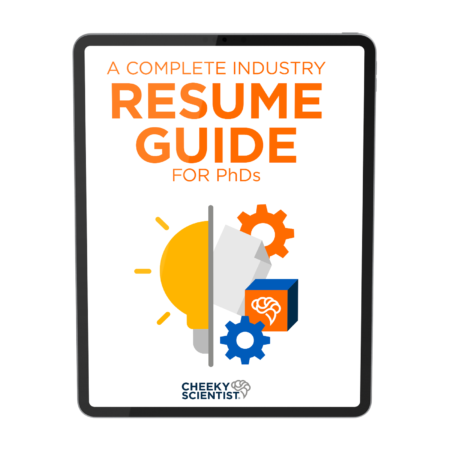7 Ways To Include Keywords In Your LinkedIn Profile

Oh, what a journey it has been.
I knew I wanted to leave the isolated academic laboratories I knew as a PhD student.
But, I wasn’t sure how to reach the industrial sector.
Did industry even want to employ PhDs like me?
It wasn’t until I began leveraging LinkedIn that I really started to believe I could make the transition from academia to industry.
I have had a Linkedin account for almost 10 years now, and I used it only as required when I was in academia, which was very little.
But, as I began looking for a position outside of the university, I realized that LinkedIn was the bridge I could use to make the transition into industry.
I discovered that LinkedIn was not only a virtual networking hub, but it was full of people willing to help me as I transitioned from academia to industry.
I took my time and ramped up my Linkedin profile one section per day, being sure to include the right keywords.
I activated the “job search” and “letting the recruiters know” tabs in my profile and, within no time, was I flooded with offers from relevant companies and positions.
It was both surprising and amazing.
I knew that LinkedIn was going to be the key to a successful transition when an expert, and big name in my research area, contacted me on LinkedIn.
I was so excited.
So, I replied professionally and set us up for a fruitful long-term connection.
This experience happened over and over again, with many people in the industry I wanted to transition into connecting with me.
The visibility of my profile in search results was key.
Networking through LinkedIn has been hugely important for my successful transition.
And, I know that it will continue to be important for continued success throughout my career.
Why Your LinkedIn Profile Is Useless Without Keywords
LinkedIn has reported that there are 546 million people using LinkedIn.
That is an astounding figure.
It’s wonderful that LinkedIn creates a place for you to be able to connect with so many people.
But, how can you stand out in the sea of 546 million people?
How can you get noticed by the people within your target industry and location?
By using keywords.
According to US News, 95% of recruiters use LinkedIn to find job candidates.
And, keyword searches are the most common way to find the right job candidates.
Just type in a few words, and LinkedIn shows you people’s profiles associated with those words.
Recruiters rely on LinkedIn’s algorithm to show them the most relevant profiles based on their keyword search.
Recruiters know what they need in a candidate, so all they have to do is a keyword search for those skills.
As a job seeker, it’s your responsibility to make your profile keyword optimized, so that you show up in these search results.
Without a keyword strategy, your LinkedIn profile will be lost in the crowd.
7 Strategies To Include Keywords In Your LinkedIn Profile
To really be successful on LinkedIn, you must understand how their algorithm works.
It is essential that you pepper the right keywords throughout your profile.
This will drastically increase the number of people who see your profile.
And, more profile views means an increase in new connections, and potentially more job opportunities.
Here are 7 ways to increase your profile visibility by incorporating keywords into your LinkedIn profile…
1. Use keyword finding software.
The first step to including keywords is to know what keywords you should focus on.
This will be different for everyone.
But, the easiest way to figure out your unique keywords is to use a software program such as wordle or wordcloud.
Find about 5-10 job postings for the industry positions that you are interested in.
This can be for just one type of position, or for several types of positions that you want to transition into.
Copy and paste all of these job advertisements into one document.
Then, you can use the keyword finding software to find out what words appear most often in these job postings.
The words that appear many times are your keywords.
These are the keywords that the hiring manager or recruiter is looking for on the LinkedIn profile of potential job candidates.
These are the words they are searching for on LinkedIn.
For the best chances of getting noticed on LinkedIn, you must include as many of these keywords as possible in your profile.
2. Write the maximum number of words for each section.
Once you know what keywords you should include in your profile, you want to use those words as many times as possible.
You don’t want to use them unnaturally, though.
To include the maximum number of keywords, you need to fill up each section of your profile.
Each section has a maximum allowed number of characters — for example, the summary section allows for 2,000 characters.
You should use up all 2,000 characters when writing your summary, as this gives you the largest opportunity to add in keywords.
The same is true for each section of your work experience, education, and volunteer experience.
Use all the available space to include as many keywords as possible.
The more keywords there are in your profile, the more highly you will rank for a particular search result.
3. Highlight your transferable skills throughout.

When completing your LinkedIn profile, you should include your transferable skills in every section.
Many PhDs don’t realize that even the description of your graduate school work or volunteer experience should be written in an industry-focused way.
You should always lead with a transferable skill and tie everything to an industry-relevant result.
Do not just list the duties or tasks you performed.
Listing your duties does not help with including keywords and it makes you look ill-prepared and unprofessional.
Instead, write in paragraph form for your summary, and in either paragraph or bullet form for your work experience descriptions.
This allows you to naturally include your transferable skills and to demonstrate that you can write clearly.
4. Include your relevant technical skills.
As a PhD, you have many technical skills.
And, these technical skills are keywords that you should include in your LinkedIn profile.
A hiring manager or recruiter is going to search for people who have the skills they want in a job candidate.
If you have direct experience with a skill you know is required for the industry positions you seek, then you should definitely include that keyword throughout your profile.
But, even if you don’t have experience with a skill that you know is a keyword for positions you are interested in, you should still include it in your LinkedIn profile.
The way to do this is to use the word, “relevant”.
You can write, “experienced in x technique which is relevant to y skill”.
This way, you can still include the keyword even though you do not have direct experience with the desired skill.
Plus, your technical skills are not what industry employers are most interested in.
It’s more important to employers that you have the right transferable skills and that you will fit nicely into their team.
5. Write your desired location in your profile.
Your desired work location is an often overlooked keyword.
But, location is one of the first things a recruiter or hiring manager is going to search.
For example, if a company is based in San Diego, they would prefer to find a job candidate who is also in San Diego.
The only way that a recruiter is going to know that you are based in San Diego, or are interested in working in San Diego, is if you put this keyword into your profile.
This is pretty straightforward if you already live in your desired location, but it is also possible to include this keyword if you don’t live in your target location.
You can work this location keyword into your summary by mentioning the location in the personal narrative you write here.
Or, you can join and network with online groups that are located in the city, state, or country you want to work in and then include this in your hobbies or volunteer experience section.
Also, remember to set your LinkedIn profile to your target area.
6. Include the name of the industry you are interested in.
The industry you are trying to transition into is another often overlooked keyword.
You should write the general industry that you are targeting in all the parts of your LinkedIn profile.
Mention your interest in biotech or biopharma.
Write about your desire to join a non-profit, work in the financial industry, or be a part of the food industry, etc.
Whatever the industry is that you are interested in, mention it in your LinkedIn profile.
This broad concept will be a commonly searched keyword, and having it in your profile multiple times will improve your profile’s visibility.
And, more visibility equals more chances to be seen by a recruiter.
7. Publish to Pulse using keywords.
Many PhDs fail to take full advantage of the LinkedIn publishing platform, Pulse.
Posting regular updates onto Pulse is will make a huge impact on the ranking and visibility of your profile.
Post more often, and more people will see your profile.
To increase this benefit even further, post things to Pulse that contain high levels of your keywords.
You could write a review of a new industry development, or review a recent conference in your area.
You could write an update that discusses your latest research in a way that is accessible to the general public.
Anything that you think would add value to your connections on LinkedIn, and that contains relevant keywords, is a great thing to post on Pulse.
Regularly posting to Pulse is a strategy many PhDs have used to land the industry position they wanted.
To leverage LinkedIn to the fullest extent, and use it as a tool to get hired in industry, you must include keywords in your profile. As a PhD, you have what it takes to transition from academia to industry, so don’t sell yourself short with a poorly optimized LinkedIn profile. Instead, you should use keyword finding software, write the maximum number of words for each section, highlight your transferable skills throughout, include your relevant technical skills, write your desired location in your profile, include the name of the general industry you are interested in, and publish to Pulse using keywords. These strategies will help you increase the visibility of your LinkedIn profile and successfully transition into industry.
If you’re ready to start your transition into industry, you can apply to book a free Transition Call with our founder Isaiah Hankel, PhD or one of our Transition Specialists. Apply to book a Transition Call here.

ABOUT ABHA CHALPE, PHD
Passion drives everything I do! Being a scientist by training (molecular endocrinology), I tend to analyze (sometimes over-analyze) situations. The learning that comes from this analysis is what my life thrives on. My Ph.D. and postdoctoral work has taught me to streamline my ideas and channel them to ignite the flame of success. My current role in the biotech industry allows me to characterize generic drugs such a monoclonal antibodies before sending theses drugs for clinical trials. Additionally, recently I secured the opportunity to become a branding ambassador of the same company. This is allowing me to use my creative side of things to achieve success beyond the scientific world.
More Written by Abha Chalpe, PhD

































